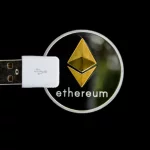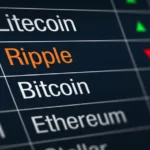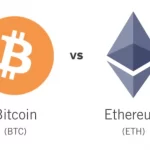Introduction
Decentralized Finance, or DeFi, is revolutionizing the traditional financial system by leveraging blockchain technology to create an open and permission less ecosystem for financial applications. In this article, we will explore the key concepts of DeFi, its benefits, and the potential it holds for reshaping the future of finance.
ImmediateConnect is your gateway to a fast, secure, and user-friendly trading experience for futures and other cryptocurrency assets

Understanding DeFi
DeFi refers to a set of financial applications and protocols that operate on decentralized networks, typically based on blockchain platforms like Ethereum. Unlike traditional finance, which relies on intermediaries such as banks or exchanges, DeFi applications enable direct peer-to-peer transactions, lending, borrowing, and investment activities, without the need for intermediaries.
Key Components of DeFi
Decentralized Exchanges (DEXs)
DEXs facilitate the exchange of cryptocurrencies directly between users, without the need for a centralized authority. These platforms utilize smart contracts to enable trustless and secure trading.
Stablecoins
Stablecoins are cryptocurrencies designed to maintain a stable value, often pegged to a fiat currency like the US Dollar. They provide stability in a volatile market and serve as a medium of exchange within the DeFi ecosystem.
Lending and Borrowing Platforms
DeFi platforms allow users to lend their crypto assets and earn interest, or borrow assets by collateralizing their existing holdings. These platforms utilize smart contracts to automate the lending and borrowing process.
Decentralized Insurance
DeFi insurance protocols provide coverage against smart contract failures, hacks, and other risks associated with DeFi activities. Users can participate in underwriting or purchase insurance coverage for their investments.
Benefits of DeFi
DeFi offers several advantages over traditional finance.
Accessibility
DeFi applications are open to anyone with an internet connection and a digital wallet. They provide financial services to the unbanked and underbanked populations globally, bypassing traditional barriers to entry.
Transparency
DeFi operates on public blockchains, allowing users to verify and audit transactions and smart contracts. This transparency builds trust and reduces the need for intermediaries.
Interoperability
DeFi protocols are built to be interoperable, enabling users to access various DeFi services seamlessly. Users can combine different DeFi applications to create personalized financial strategies.
Programmability
DeFi applications are programmable through smart contracts, enabling the automation of complex financial transactions and the development of new financial instruments.
Challenges and Considerations
Despite its potential, DeFi faces challenges such as scalability, security vulnerabilities, and regulatory uncertainties. Smart contract bugs and exploits have led to significant financial losses in the past. It is essential for users to conduct thorough research and exercise caution when participating in DeFi activities.
The Future of DeFi
DeFi is still in its early stages, and its potential for transforming finance is vast. As scalability solutions, such as layer 2 protocols and alternative blockchains, continue to develop, DeFi applications are expected to scale and handle mainstream adoption. Regulatory frameworks are also being developed to provide clarity and protect users, fostering further growth in the DeFi ecosystem.
Conclusion
DeFi is revolutionizing traditional finance by leveraging the power of blockchain technology. With its open and permission less nature, DeFi empowers individuals with greater financial access, transparency, and control. As the ecosystem continues to evolve and overcome challenges, DeFi has the potential to reshape the future of finance, creating a more inclusive and decentralized financial system for everyone.
Join 25,000+ smart readers—don’t miss out!






